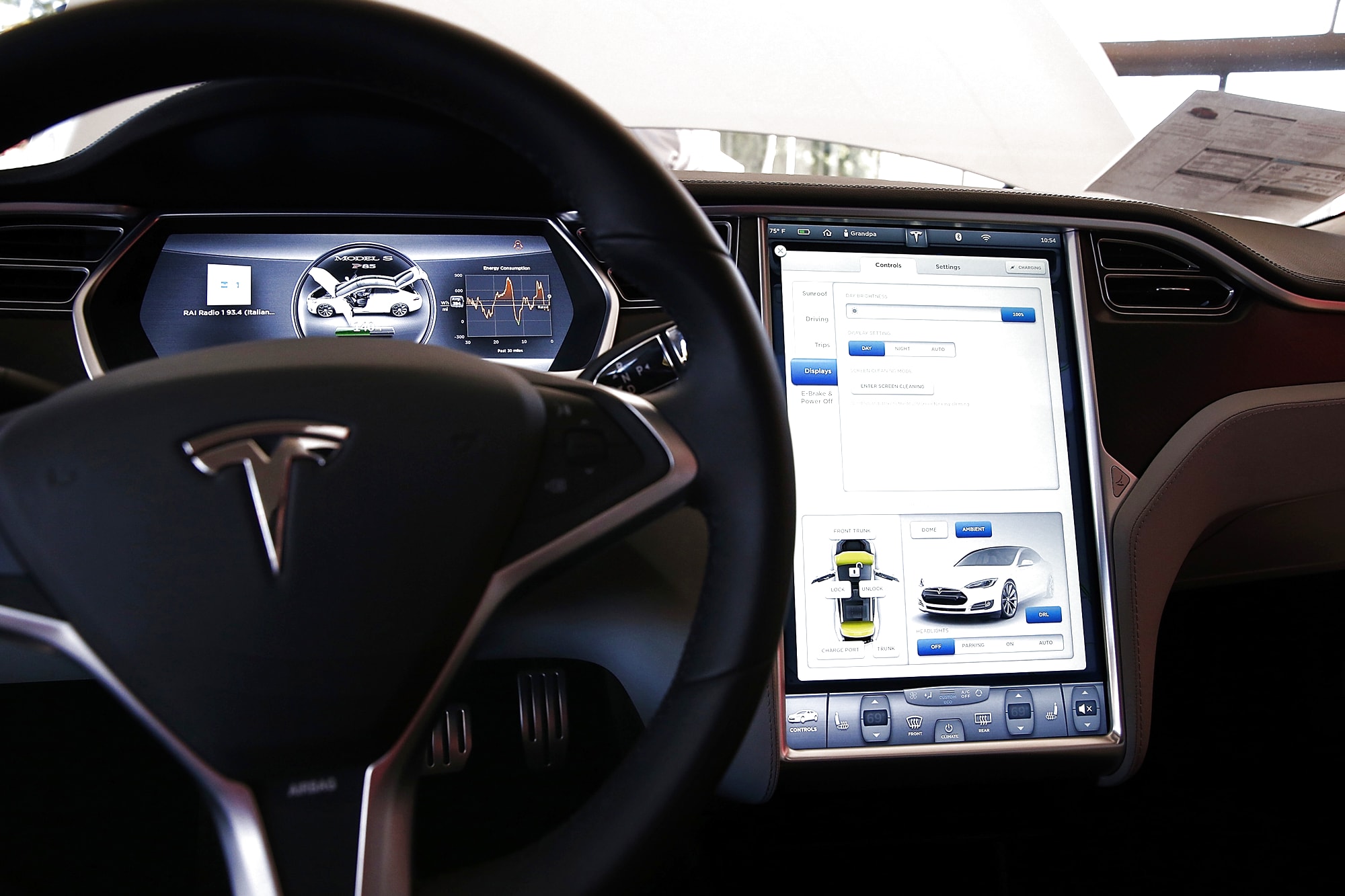
A view of the dashboard in a Tesla Model S car.
Getty Images
Tesla on Monday notified owners of older Model S and Model X electric vehicles that the company will refund them for repairs if they previously had to pay out-of-pocket to fix a problem in their main computers.
The problem manifested as a blank touchscreen or other glitches in the system and was related to memory device failures in the computer that stores data from the vehicle.
In customer emails obtained by CNBC, Tesla said it will repair the Model S and Model X cars for owners who are currently experiencing those issues, under an expanded warranty with some conditions.
The warranty expansion and offer to refund some owners may help Tesla avoid a mandatory recall, and a settlement or drawn out court battles.
Tesla did not reply to a request for more information.
How a Tesla ‘MCU’ works
In a Tesla electric car, the main computer, also known as an “MCU,” powers the touchscreen where drivers can view and control their entertainment, navigation, air conditioning and other vehicle features. The main computer contains a number of processors, memory devices, GPS and other technical components.
The memory devices in some Tesla MCUs have a limited “write cycle,” which means they won’t work well, or at all, after they hit a certain number of program or erase cycles.
For years, Tesla owners occasionally complained in online forums of blackouts befalling their main computers, sometimes in the midst of a drive, which rendered their cars basically useless. It is not safe, for example, to operate a Tesla if the driver is unable to defrost and run the heat in icy weather. Spontaneous main computer failures could also disable safety features like the backup cam, which is meant to help drivers spot pedestrians or obstacles before backing out of a spot.
Tesla will perform the repair on affected cars’ computers under the expanded warranty only if the owner has not yet exceeded 100,000 miles or 8 years of ownership. Tesla will not replace the computer’s memory device for owners who are approaching the end of a warranty period and who want to make a fix proactively.
Proposed class action
In expanding its warranty and agreeing to refund some of the customers who paid for a new MCU or to repair their MCU’s memory device out of pocket, Tesla may prevent a proposed class action lawsuit from advancing. The complaint on behalf of Tesla customers was filed on May 13, 2020 in California. It alleged that Tesla had violated state and federal laws concerning fair marketing and sales practices, consumer safety and vehicle warranties.
In June this year, as Reuters previously reported, the National Highway Traffic Safety Administration opened a probe into problems with the MCU in some of Tesla’s older Model S and Model X vehicles. That probe covered vehicles made by Tesla from 2012 to 2015. The investigation was prompted by around a dozen consumer complaints submitted to the vehicle safety regulators.
Tesla has reportedly used at least some of the same technical components in 159,000 vehicles including Model S sedans built from 2012 to 2018, and Model X SUV’s built from 2016 to March 2018.
In 2018, Tesla shifted away from its MCU-1 system, which used Nvidia Tegra 2 and Tegra 3 processors with 4GB or 8GB eMMC NAND flash memory devices made by SK Hynix. This system is known to have memory device problems.
It later began to install a newer MCU-2 system in Model S and Model X vehicles, which included an Intel Atom processor with Micron 64Gb storage chips.
Tesla notified people who own or previously owned potentially effected vehicles by e-mail. Multiple customers shared the company’s communication with CNBC.
Here’s what Tesla wrote:
“Our records show that you own or previously owned a Tesla Model S/X that was built before March 2018. It may be eligible for Tesla’s Warranty Adjustment Program covering malfunction of a memory chip (embedded MultiMediaCard). This malfunction may result in a blank or intermittently blank touchscreen but will not impact the ability to drive your car.
Tesla is providing eligible owners who experience a malfunction no-cost repairs to this part at any Tesla Service Center for 8 years/100k miles from initial delivery date. If you do not experience a malfunction, there’s no need to take action.
If you have already paid for repairs that meet the conditions of the program, you may be eligible for reimbursement. Tesla will send reimbursement details and eligibility by February 2021.
To learn more about the program and its terms and conditions, please click the link below.”
Leave a Reply